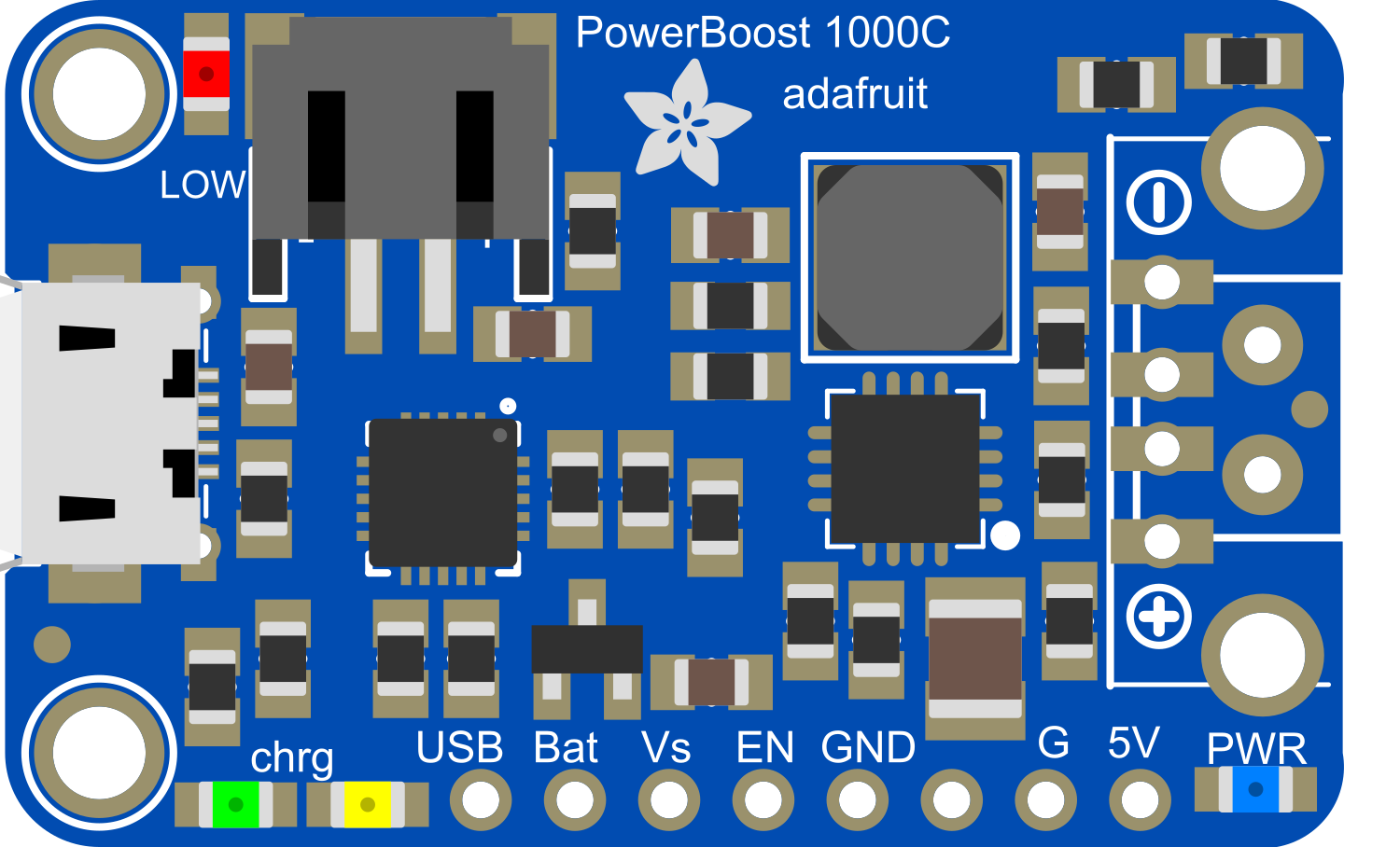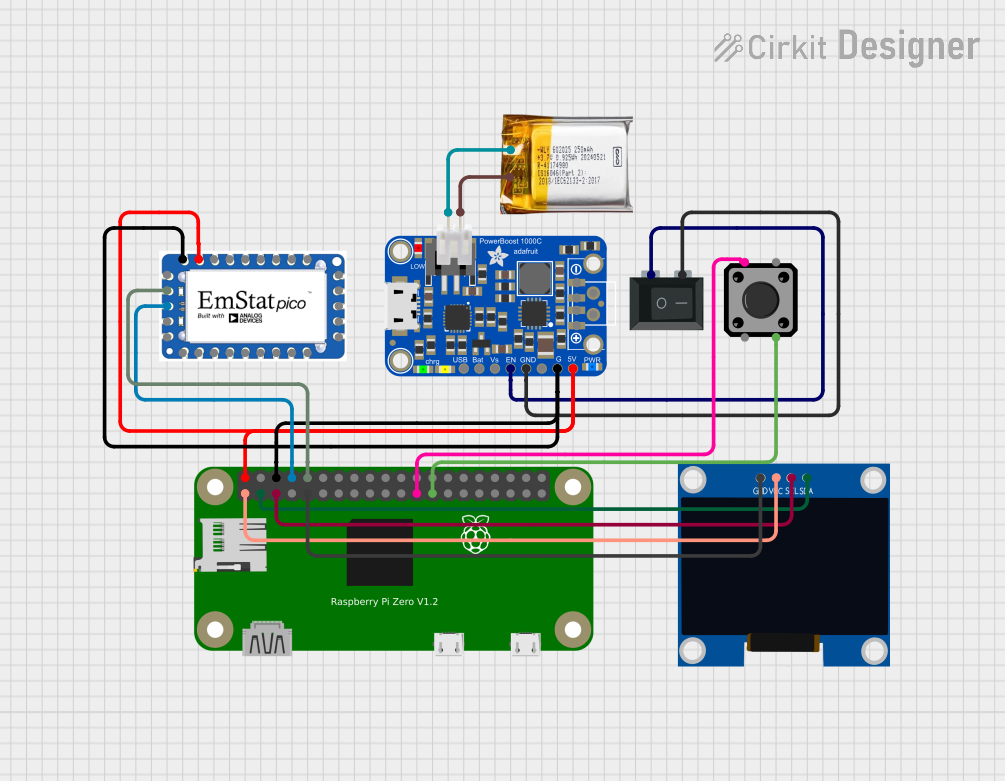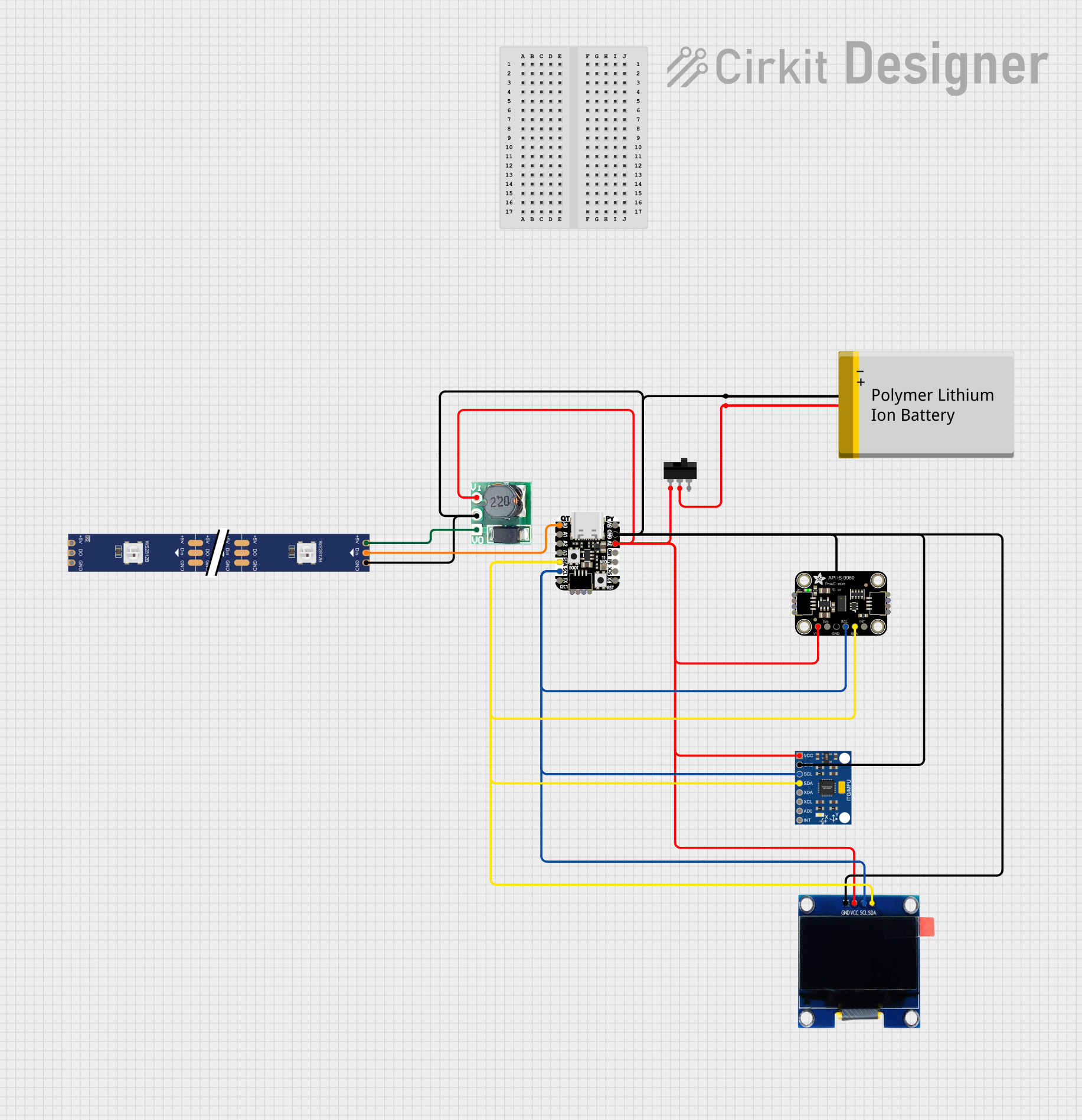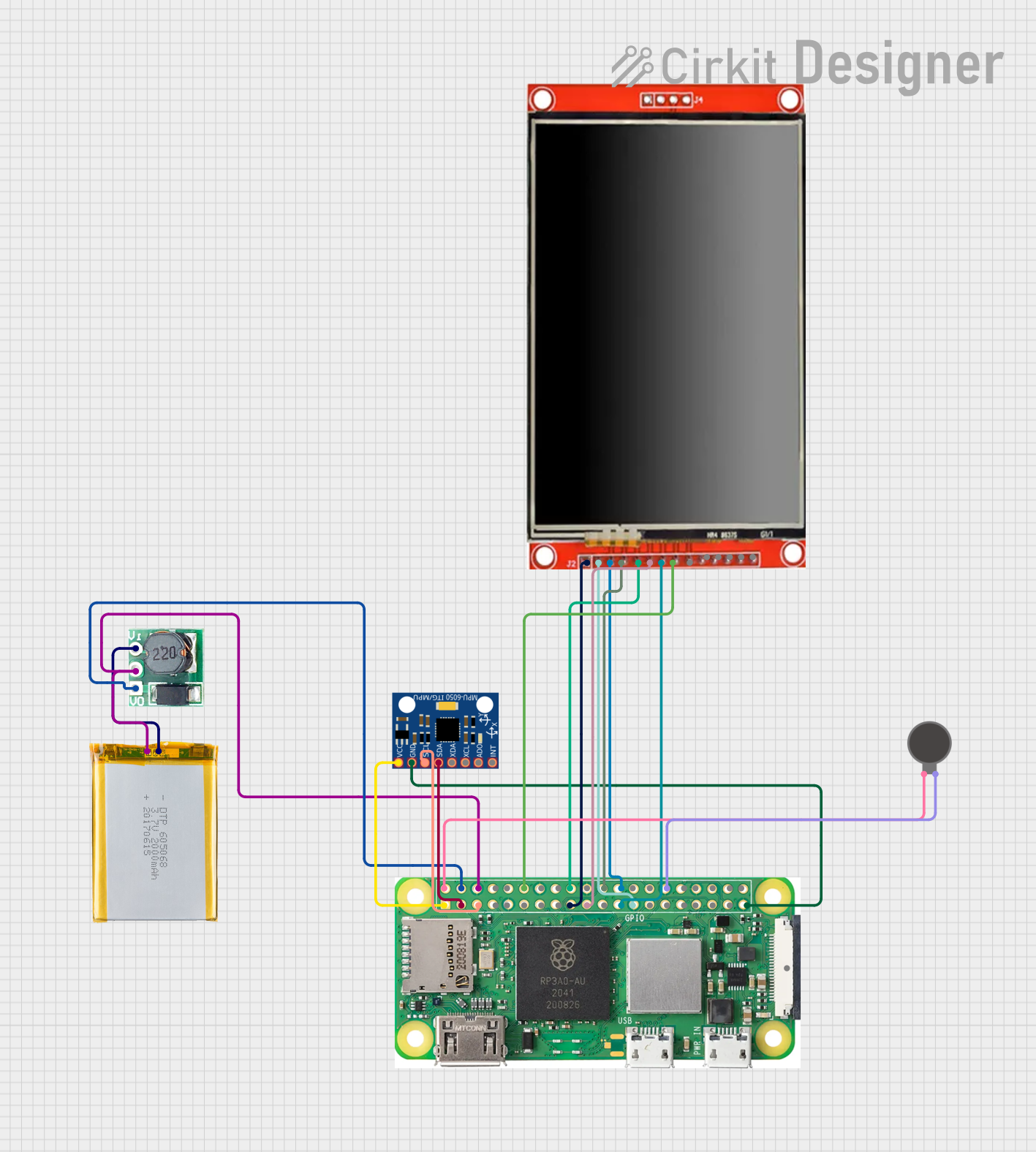
How to Use Adafruit PowerBoost 1000C: Examples, Pinouts, and Specs

 Design with Adafruit PowerBoost 1000C in Cirkit Designer
Design with Adafruit PowerBoost 1000C in Cirkit DesignerIntroduction
The Adafruit PowerBoost 1000C is a compact and versatile power management module designed to boost a 3.7V lithium polymer (LiPo) or lithium-ion battery to a stable 5V output. It is capable of delivering up to 1A of current, making it ideal for powering microcontrollers, single-board computers, and other 5V devices. Additionally, the module features an integrated battery charger, allowing you to charge the connected battery via a micro-USB port while simultaneously powering your device.
Explore Projects Built with Adafruit PowerBoost 1000C

 Open Project in Cirkit Designer
Open Project in Cirkit Designer
 Open Project in Cirkit Designer
Open Project in Cirkit Designer
 Open Project in Cirkit Designer
Open Project in Cirkit Designer
 Open Project in Cirkit Designer
Open Project in Cirkit DesignerExplore Projects Built with Adafruit PowerBoost 1000C

 Open Project in Cirkit Designer
Open Project in Cirkit Designer
 Open Project in Cirkit Designer
Open Project in Cirkit Designer
 Open Project in Cirkit Designer
Open Project in Cirkit Designer
 Open Project in Cirkit Designer
Open Project in Cirkit DesignerCommon Applications and Use Cases
- Portable electronics and battery-powered projects
- Powering microcontrollers like Arduino, Raspberry Pi, or ESP32
- Emergency power supplies for small devices
- Wearable technology
- Robotics and IoT devices
Technical Specifications
Key Technical Details
- Input Voltage (Battery): 3.7V nominal (LiPo/Li-ion battery)
- Input Voltage (USB): 5V via micro-USB
- Output Voltage: 5V DC
- Output Current: Up to 1A continuous
- Charging Current: 1A (maximum)
- Efficiency: Up to 90% (depending on load)
- Low-Battery Indicator: 3.2V threshold
- Dimensions: 22mm x 50mm x 5mm
- Weight: 5.7g
Pin Configuration and Descriptions
The Adafruit PowerBoost 1000C has several pins and connectors for input, output, and control. Below is a detailed description:
| Pin/Connector | Description |
|---|---|
| BAT | Battery input pin for connecting a 3.7V LiPo/Li-ion battery. |
| GND | Ground connection. |
| 5V | 5V output pin for powering external devices. |
| EN | Enable pin. Pull low to disable the 5V output. |
| LBO | Low-battery output indicator. Goes low when the battery voltage is below 3.2V. |
| USB | Micro-USB connector for charging the battery and powering the module. |
Usage Instructions
How to Use the Component in a Circuit
- Connect the Battery:
- Attach a 3.7V LiPo or Li-ion battery to the BAT and GND pins. Ensure correct polarity to avoid damage.
- Power the Module:
- Optionally, connect a 5V micro-USB cable to the USB port to charge the battery and power the module simultaneously.
- Connect the Load:
- Use the 5V and GND pins to power your external device. Ensure the load does not exceed 1A.
- Enable/Disable Output:
- Use the EN pin to control the 5V output. Pull the pin low to disable the output, or leave it floating for normal operation.
Important Considerations and Best Practices
- Battery Selection: Use only 3.7V LiPo or Li-ion batteries with a JST connector for safe operation.
- Heat Management: The module may heat up under high loads. Ensure proper ventilation or heat dissipation.
- Low-Battery Protection: Monitor the LBO pin to detect low battery conditions and prevent over-discharge.
- Charging Safety: Do not exceed the 1A charging current limit. Use a USB power source capable of supplying at least 1.5A for optimal performance.
Example: Using with Arduino UNO
The PowerBoost 1000C can be used to power an Arduino UNO. Below is an example setup:
- Connect the 5V pin of the PowerBoost to the 5V pin of the Arduino UNO.
- Connect the GND pin of the PowerBoost to the GND pin of the Arduino UNO.
- Optionally, monitor the LBO pin to detect low battery conditions.
Here is a simple Arduino sketch to monitor the LBO pin:
// Define the pin connected to the LBO (Low-Battery Output) signal
const int lboPin = 2;
void setup() {
pinMode(lboPin, INPUT); // Set LBO pin as input
Serial.begin(9600); // Initialize serial communication
}
void loop() {
int lboState = digitalRead(lboPin); // Read the LBO pin state
if (lboState == LOW) {
// If LBO is LOW, the battery voltage is below 3.2V
Serial.println("Warning: Low battery detected!");
} else {
// If LBO is HIGH, the battery voltage is sufficient
Serial.println("Battery voltage is sufficient.");
}
delay(1000); // Wait for 1 second before checking again
}
Troubleshooting and FAQs
Common Issues and Solutions
Module Overheating:
- Cause: High current draw or insufficient ventilation.
- Solution: Reduce the load or ensure proper airflow around the module.
No Output Voltage:
- Cause: Battery not connected, or the EN pin is pulled low.
- Solution: Check the battery connection and ensure the EN pin is not grounded.
Battery Not Charging:
- Cause: Insufficient USB power supply or damaged battery.
- Solution: Use a USB power source capable of supplying at least 1.5A and verify the battery's condition.
Low-Battery Indicator Always On:
- Cause: Battery voltage is consistently below 3.2V.
- Solution: Recharge the battery or replace it if it is damaged.
FAQs
Q1: Can I use the PowerBoost 1000C without a battery?
A1: Yes, you can power the module directly via the micro-USB port, but the low-battery indicator will not function.
Q2: What happens if the load exceeds 1A?
A2: The module may overheat, and the output voltage may drop. Prolonged overloading can damage the module.
Q3: Can I use this module to charge other types of batteries?
A3: No, the PowerBoost 1000C is specifically designed for 3.7V LiPo or Li-ion batteries. Using other types of batteries may result in damage or unsafe operation.
Q4: Is the module safe for continuous operation?
A4: Yes, as long as the load does not exceed 1A and proper heat dissipation is ensured, the module can operate continuously.